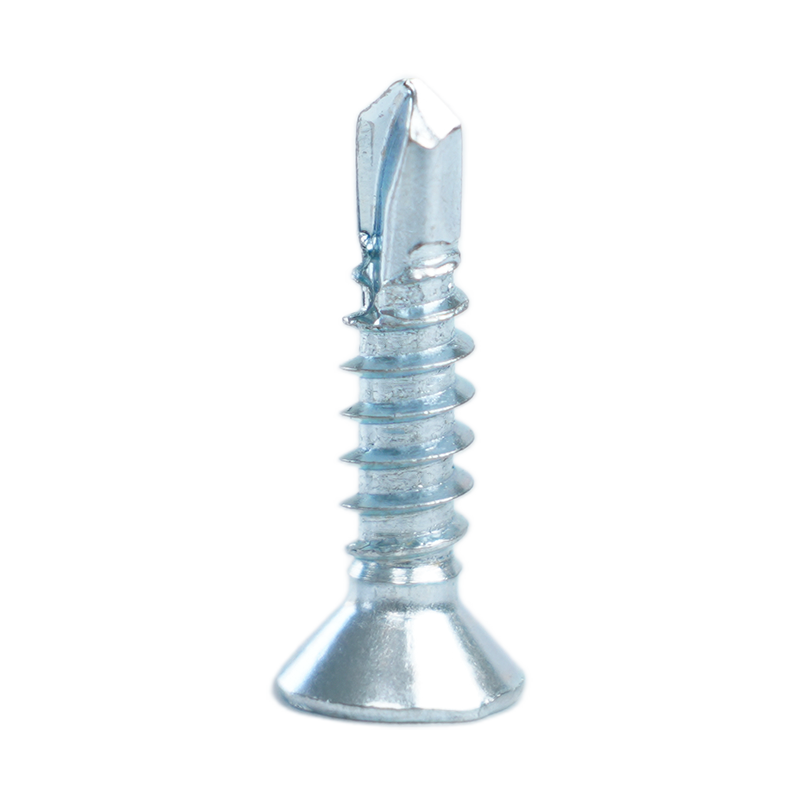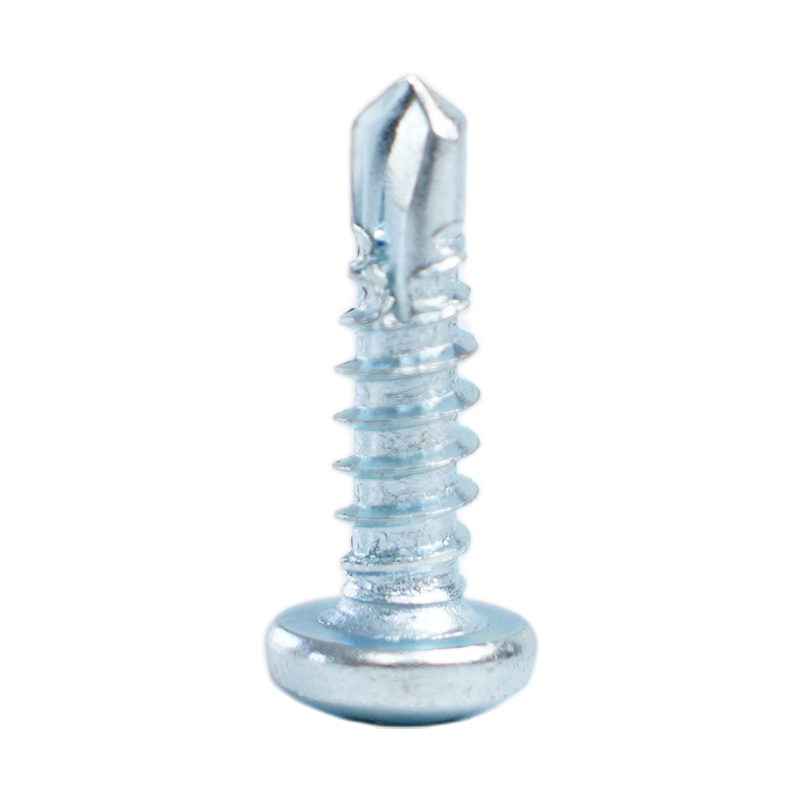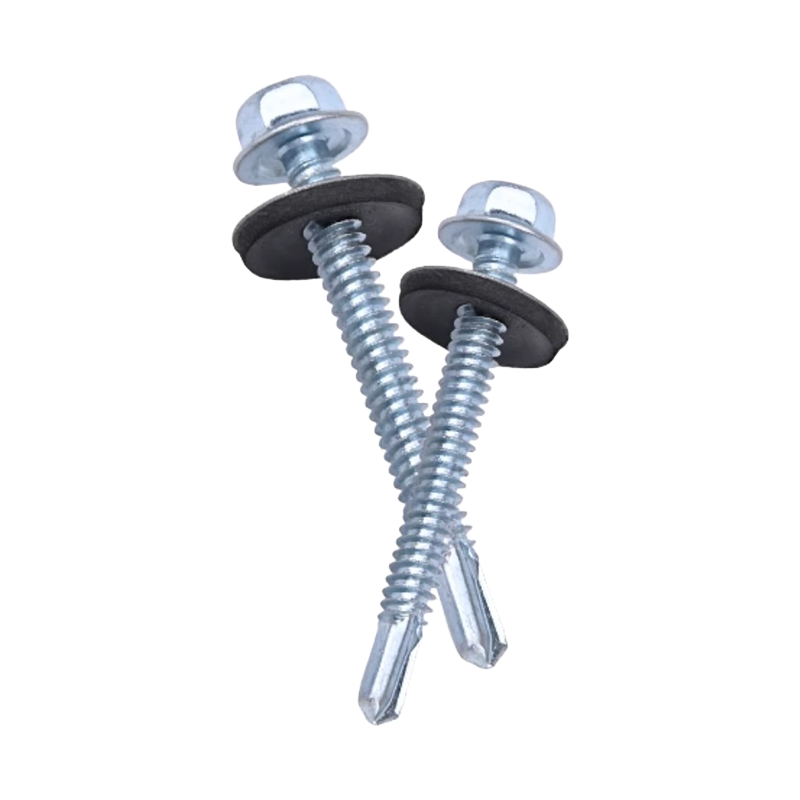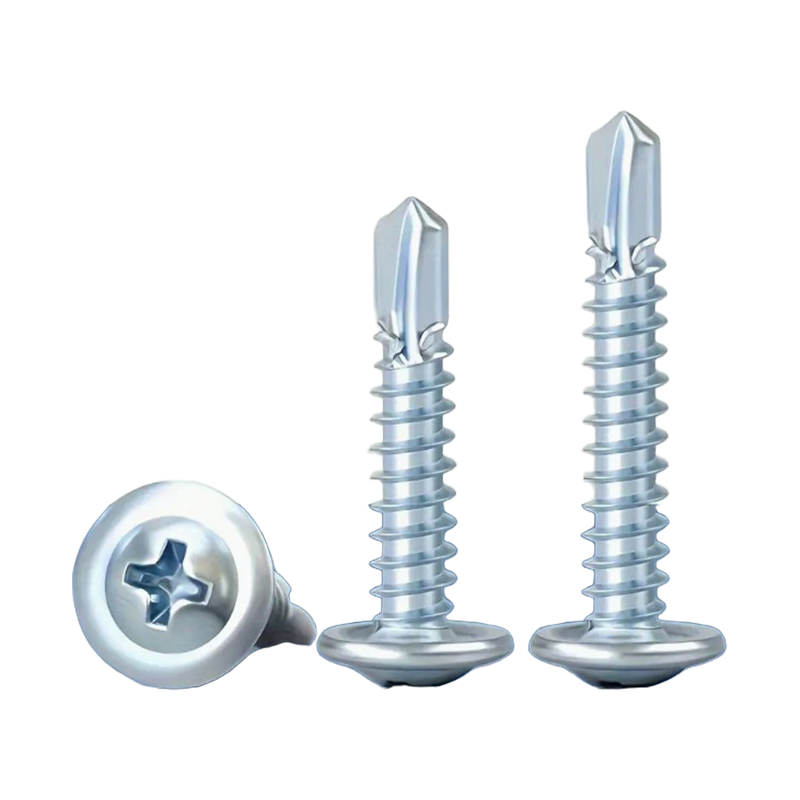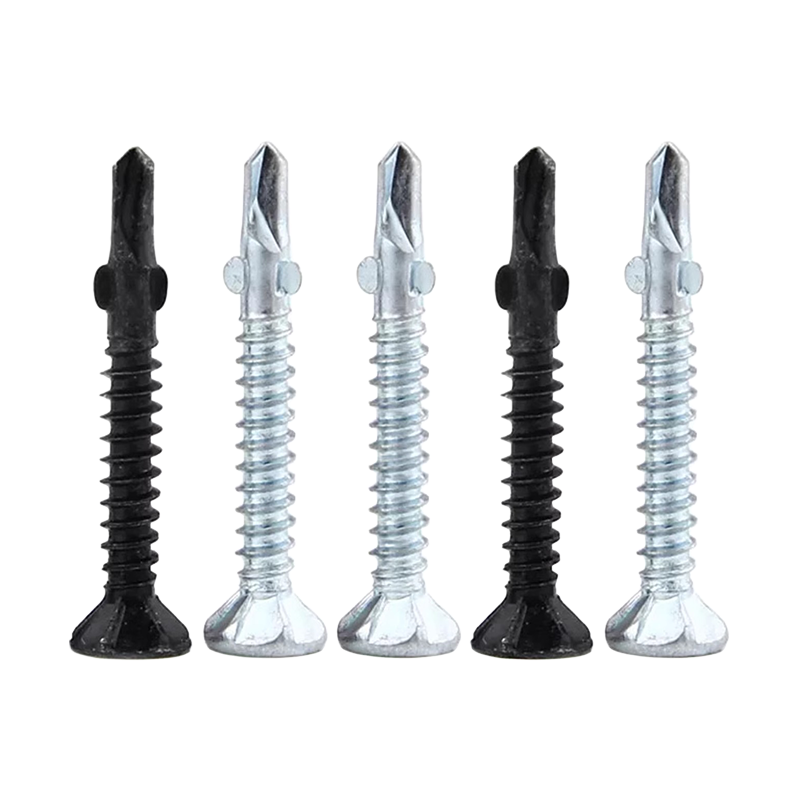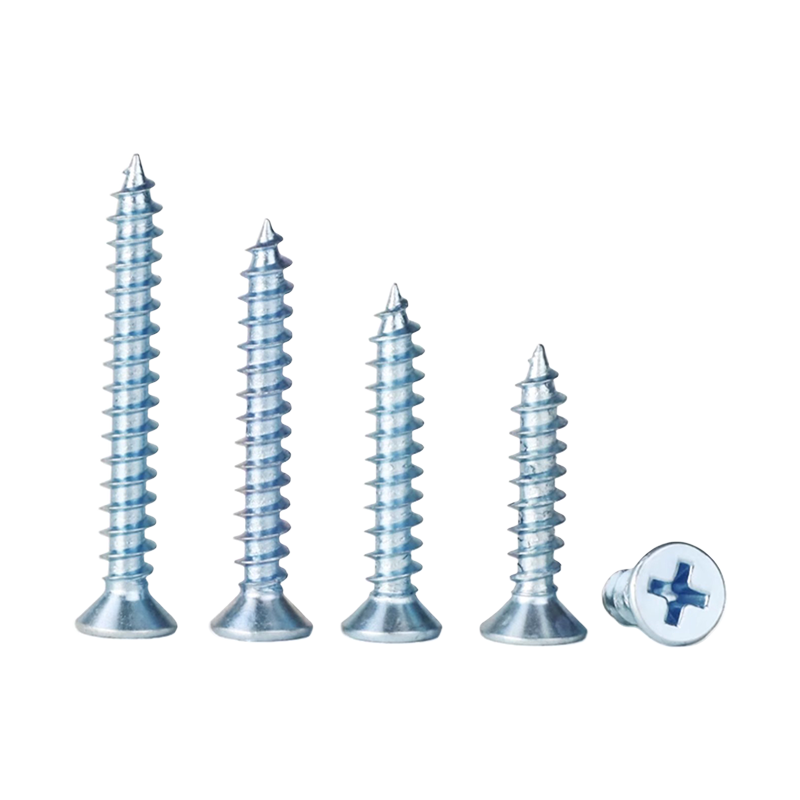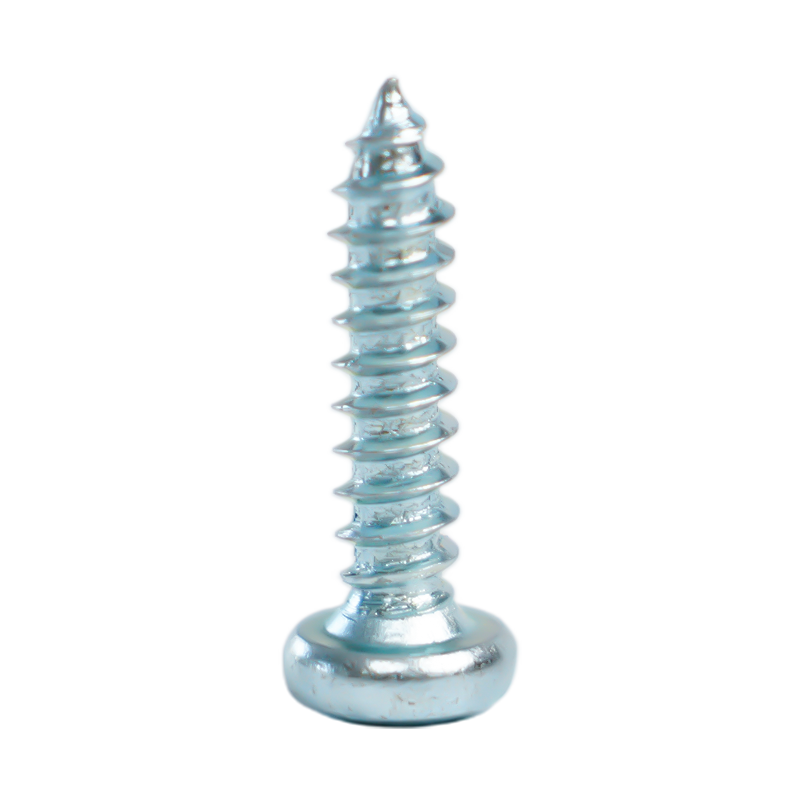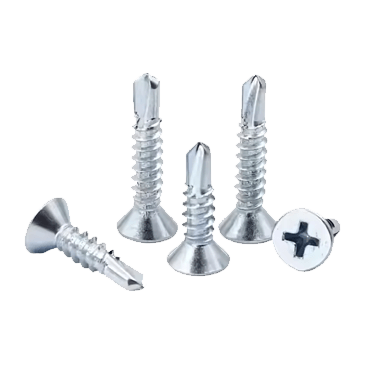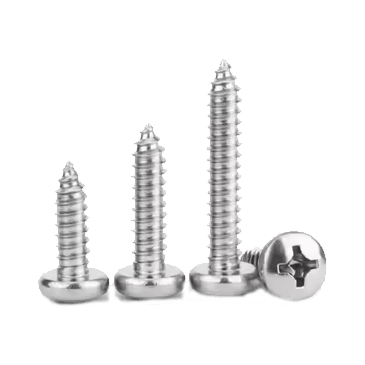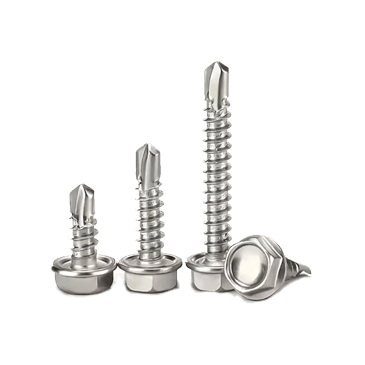1. Bimetallic material combination lays the foundation for high strength
Bimetal Compound Self Drilling Screws organically combine two different metal materials, each of which plays a key role in its respective functional area, thus providing a material basis for high connection strength and pull-out strength.
Specific stainless steel materials are often used for the head and locking part of the screw. This stainless steel has good toughness and ductility. During the tightening process, even if it is deformed to a certain extent by a large external force, it will not break easily. When the screw is screwed into the connected part, the head fits tightly with the surface of the connected part. The stainless steel material can evenly disperse the pressure from all directions and avoid local stress concentration by virtue of its characteristics. At the same time, its structure is stable and can maintain its shape during long-term use, continuously providing a stable locking force for the entire connection structure, which is an important prerequisite for ensuring connection strength and pull-out strength.
The tapping part and the tip drilling tail part are made of alloy steel or carbon steel. After special treatment, the hardness of these metals is greatly improved. When the screw penetrates the material, the high-hardness drill tail is like a sharp tool that can quickly cut the material, creating conditions for subsequent tapping and connection. After the threaded connection is formed, the alloy steel or carbon steel of the tapping part tightly bites the thread of the connected part with its high strength. The strong friction and mechanical interlocking between the two enable the screw to effectively disperse the external force to the entire connection area when it is subjected to tension and shear force, rather than just acting on a local area, thereby significantly improving the connection strength and pull-out strength.
In addition, the two metal materials complement each other in physical and chemical properties. The corrosion resistance of stainless steel ensures the service life of the screw in various environments, avoiding the degradation of material properties due to corrosion, which in turn affects the connection strength; the high hardness and high strength of alloy steel or carbon steel focus on achieving efficient penetration and firm connection. This material combination allows bimetallic composite self-drilling screws to maintain good connection performance under different working conditions and ensure the stability of the connection part.
Second, precise manufacturing process improves connection performance
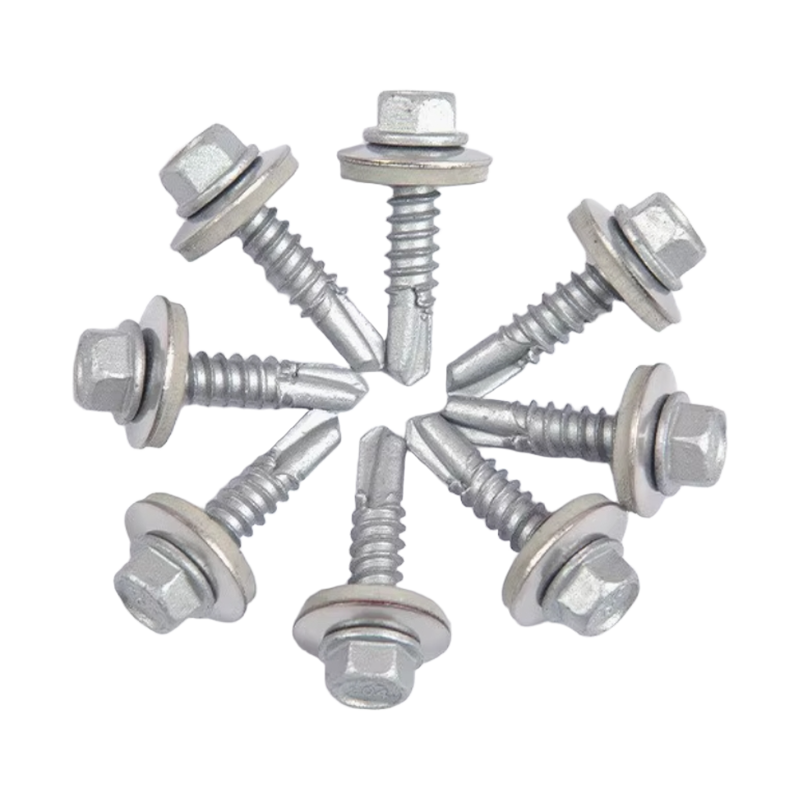
In addition to a reasonable material combination, precise manufacturing process is another key factor for bimetallic composite self-drilling screws to achieve high connection strength and pull-out strength.
The composite process is the key step in the production process. When stainless steel is composited with alloy steel or carbon steel, whether it is welding composite or hot pressing composite, the process parameters must be precisely controlled. Taking welding composite as an example, in friction welding, the speed, pressure and friction time of the two metal surfaces rubbing against each other will affect the quality of the welding interface. Only when these parameters are optimally matched can the two metals be fully fused at high temperature to form a strong bonding interface, ensuring that the composite material will not have problems such as delamination and cracking during subsequent processing and use, laying the foundation for high connection strength and pull-out strength. If the composite process is not in place, the two metals are not tightly bonded, and it is easy to break from the joint when subjected to force, resulting in connection failure.
The forming process has strict requirements on the dimensional accuracy and shape of the screw. From the initial forming by cold or hot forging, to the turning process to ensure the diameter accuracy and surface roughness of the rod, to the rolling or threading to form the thread, every link is crucial. Accurate size can ensure that the screw and the thread of the connected part match perfectly and reduce the gap after installation. If the thread size is inaccurate, it will not be able to form a tight fit with the connected parts. When subjected to tension and shear force, it is easy to loosen or even slip, which seriously reduces the connection strength and pull-out strength. Good surface roughness can reduce friction, making it easier to screw the screw into the connected parts, and also helps to improve the stability of the connection.
The role of heat treatment process in improving the performance of screws cannot be ignored. For alloy steel or carbon steel parts, the temperature, time and other parameter settings of quenching and tempering determine its internal structure and performance. A suitable quenching process can enable alloy steel to obtain martensitic structure, greatly improving hardness and strength; proper tempering treatment can eliminate quenching stress and adjust the balance between hardness and toughness. After such heat treatment, the tapping part and the drill tail part have high hardness to achieve efficient penetration, and also have sufficient toughness to prevent brittle fracture when subjected to force, thereby improving the connection strength and pull-out strength of the entire screw. For stainless steel parts, solid solution treatment can improve its corrosion resistance and processing performance, ensuring that the overall connection effect will not be affected by material problems during the connection process.
Surface treatment will also affect the connection performance of the screw. Through treatments such as galvanizing and zinc-tin alloy coating, not only can the anti-corrosion ability of the screws be enhanced, but also the wear resistance and lubricity of the surface can be improved to a certain extent. The improvement of anti-corrosion performance ensures that the strength of the screws will not be reduced due to corrosion during long-term use; good wear resistance allows the thread to maintain its shape during multiple tightening and loosening processes, maintaining a tight bite with the connected parts; and proper lubricity helps the screws to be screwed into the connected parts more easily, reducing resistance and damage during installation, and ensuring the integrity and strength of the connection.
3. The embodiment of high connection strength and pull-out strength in actual scenarios
In the field of building structures, the advantages of high connection strength and pull-out strength of bimetallic composite self-drilling screws are fully reflected. In steel structure buildings, the connection between steel beams and steel columns needs to withstand huge loads, including the weight of the building itself, wind loads, seismic loads, etc. With its high connection strength, bimetallic composite self-drilling screws can firmly connect steel beams and steel columns together, so that the entire steel structure forms a stable whole. When subjected to external forces, screws can effectively transfer and disperse loads to avoid damage to the connection parts due to inability to withstand tension and shear forces. In the installation of curtain walls in high-rise buildings, screws need to reliably connect the curtain wall panels to the keels to ensure that the curtain walls will not fall off under severe weather conditions such as strong winds. The high pull-out strength of bimetallic composite self-drilling screws enables them to tightly grasp the keels and panels, provide sufficient anchoring force, and ensure the safety of the curtain wall system.
In the manufacturing of mechanical equipment, bimetallic composite self-drilling screws also play an important role. During the operation of machine tools, frequent vibrations and impact forces will be generated between various components. Bimetallic composite self-drilling screws are used to connect key components such as the bed and columns of machine tools. Their high connection strength and pull-out strength can ensure that these components always maintain relative positions under complex working conditions, ensuring the processing accuracy and stability of the machine tools. In the assembly of automobile engines, the high temperature and high pressure environment inside the engine has extremely high performance requirements for fasteners. Bimetallic composite self-drilling screws are used to connect the engine's cylinder block, cylinder head and other components. Their high strength characteristics enable them to withstand the huge pressure and vibration generated when the engine is running, ensuring the normal operation of the engine and avoiding engine failure due to loose connections.

 +86-15052135118
+86-15052135118 

 Español
Español
 Get In Touch
Get In Touch


